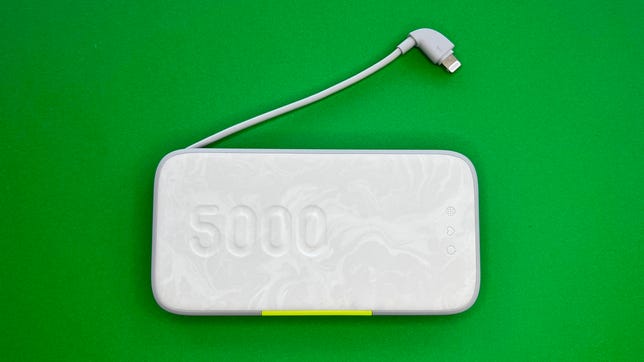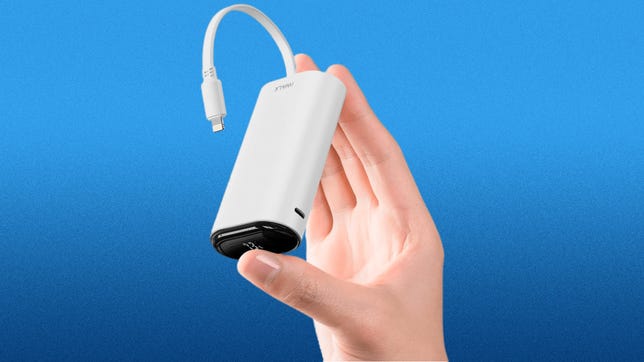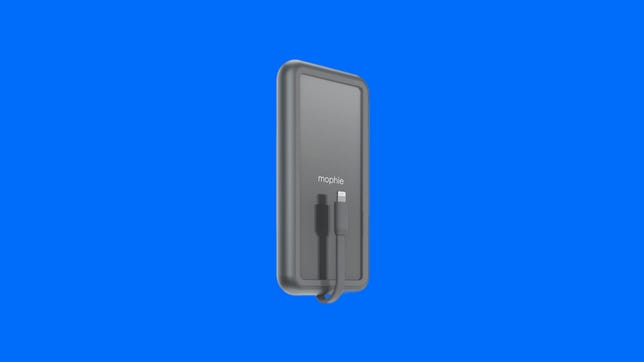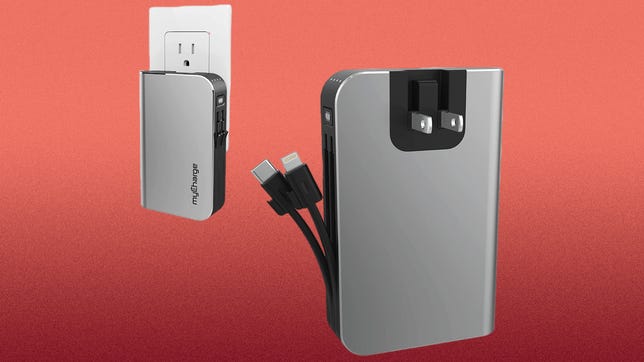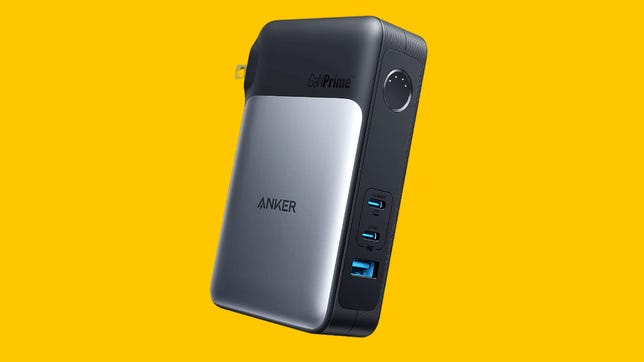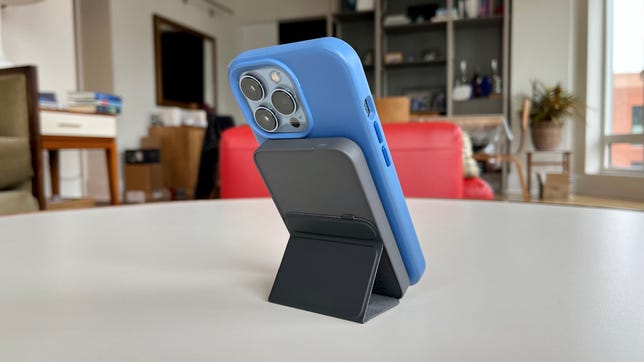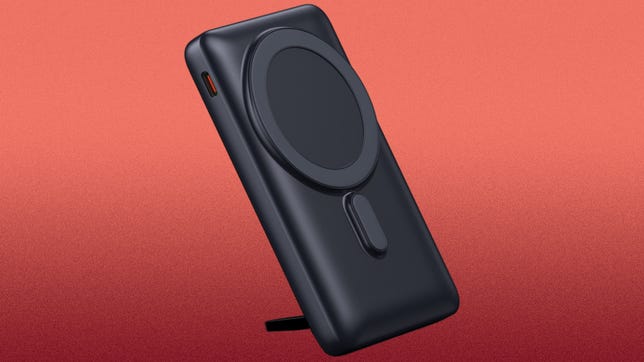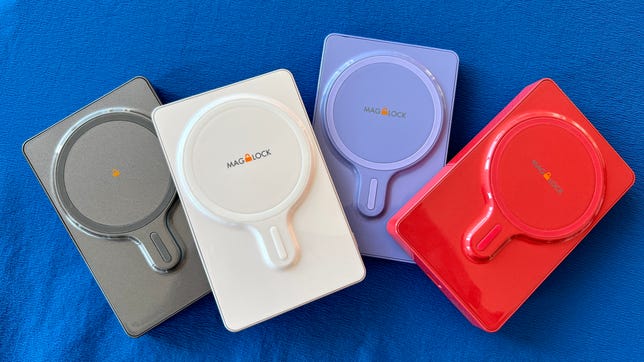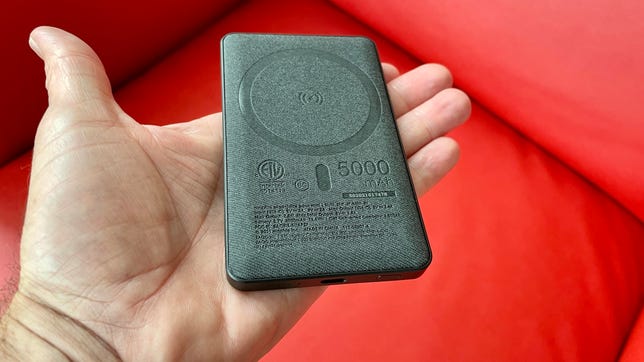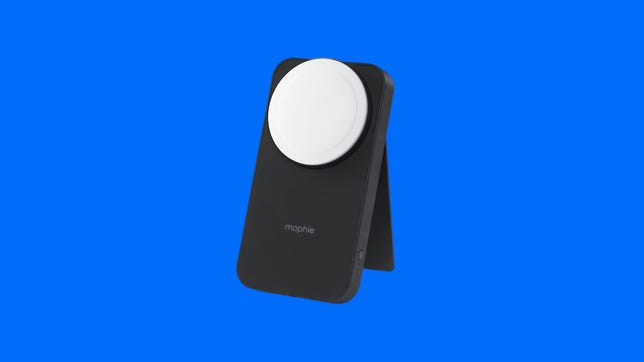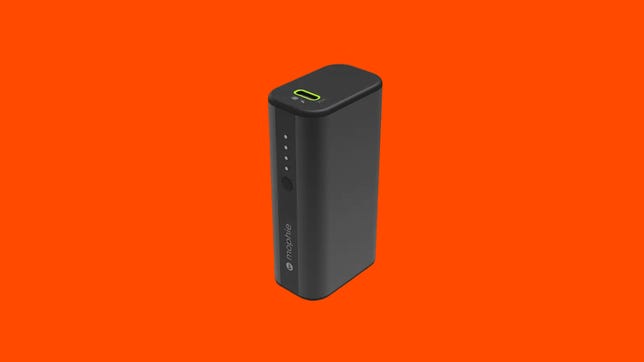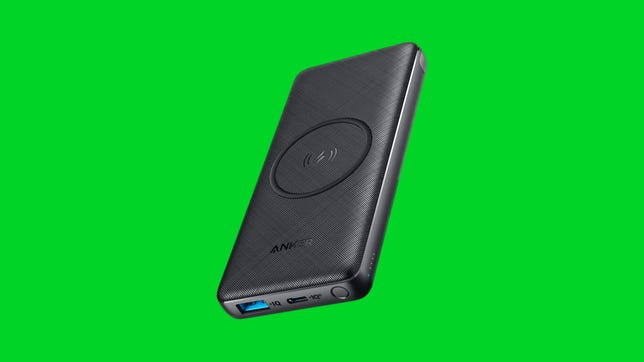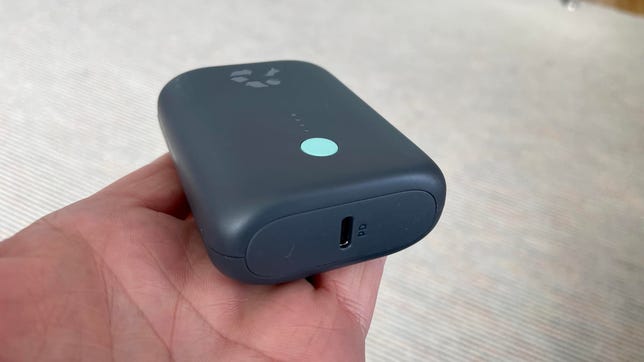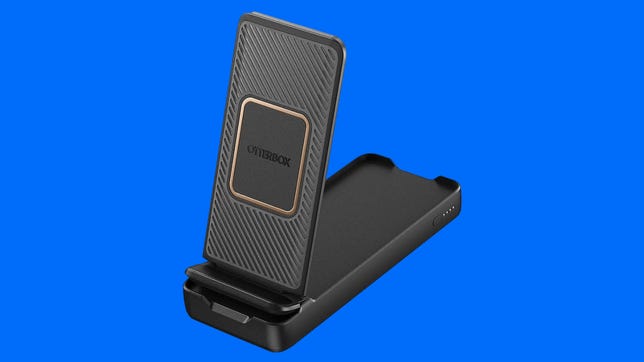Technologies
Best Power Bank for iPhone for 2023
Take your charger on the go. Here are the best portable chargers for iPhone tested and reviewed by CNET experts.

If you need power but don’t have access to an outlet, It’s obviously good to have a portable charger on hand. And while new phones like the iPhone 14 feature decent battery life, you still might not make it through the day, especially if you use your phone for gaming, video shoots and navigation, all of which which tend to take a toll on battery life. That’s why having a portable charger is a must, especially as weighty battery cases have essentially been phased out and are no longer an option.
The best portable power banks and battery chargers come in all shapes and sizes. The more affordable options tend to require use of a cable for charging, but we’re seeing more and more magnetic wireless chargers that stick to the back of your MagSafe-enabled iPhone or MagSafe-enabled case. I personally like portable power banks for iPhones that have an integrated Lightning cable, which offers fast charging.
While this list is geared toward iPhones, any portable battery pack on the list with a USB-C or USB-A out ports will work perfectly well for charging an Android smartphone (or any other portable gadget), so long as you provide a compatible smartphone cable.
So what’s the best portable charger for juicing up your iPhone on the go? Here are out top picks, all of which I’ve tested and reviewed. I’ll update this list as other top portable chargers hit the market.
Read more: Best iPhone Chargers
Best battery packs with built-in Lightning cables and foldout wall plugs
David Carnoy/CNET
Infinity Lab is Samsung-owned Harman Kardon’s new accessories subsidiary, and I like its InstantGo 5000 and InstantGo 10000 power banks, which come with an integrated Lightning cable for easy charging of iPhones. The larger 10,000 mAh costs $20 more and is heavier and bulkier, but it can charge most iPhones twice.
Screenshot by David Carnoy/CNET
While i can’t say how well this portable battery from iWalk will hold up over time, it’s a good power bank for the money, if it does manage to hold up. Along with an integrated Lightning cable that tucks away into a slot when not in use, it’s got an integrated 9,600-mAh battery, which should charge most iPhones almost twice. There’s also an LED in the battery that lets you now how much juice its got left.
The battery is a little bulky but it’s not huge for a 9,600-mAh battery. There’s nothing too fancy about it — it does feel a little generic — but it’s also about half the price of most portable batteries with a built-in Lightning cable. The Lighting cable will fast charge your iPhone at 18 watts and there’s also a USB-C out port for charging a second device (or a device that doesn’t charge via Lightning).
Screenshot by David Carnoy/CNET
Zagg hasn’t promoted its Mophie Powerstation Plus With PD charger much, but it’s one of the best portable batteries with an integrated Lightning cable. It houses a 6,000-mAh battery (that’s enough to fully charge even larger iPhones) and the Lightning cable offers 18W fast charging and tucks into a storage slot when not in use (a flap covers the storage slot so you may not realize there is a built-in cable at first).
You charge the power bank with a Lightning cable, and there’s also a USB-A out port for charging a second device (or a device that isn’t an iPhone). The battery is available in a few color options, but I’ve mainly seen it in black and gray.
Screenshot by David Carnoy/CNET
MyCharge’s Hub portable chargers come in a few different sizes and not only have an integrated foldable wall plug but integrated Lightning and USB-C cables, so you can charge both Apple and Android devices. It’s a little bulky, but with a 4,400-mAh battery, it should be able almost fully charge your smartphone, depending on its size. The step-up 6,700-mAh model is about $20 more.
Anker
Thanks to Gallium Nitride (GaN) technology, chargers have been getting more powerful while shrinking at the same time. The latest example of that trend is Anker’s new line of GaNPrime chargers with next-generation GaN 3 technology, which the company says is even more energy-efficient. The Anker Power Bank 733, combines a 65-watt charger with a 10,000K-mAh portable battery and is part of the new GaNPrime line. It’s pretty compact for what it is and offers two fast-charging USB-C ports and one fast-charging USB-A port. You can charge up to three devices at once, but note that to get a full 65W charge for a laptop, you can only plug in the laptop.
Best MagSafe-compatible magnetic battery packs for MagSafe-enabled iPhones
David Carnoy/CNET
What’s cool about Anker’s 622 magnetic battery is that it’s a wireless battery that has an integrated magnetic flap that converts into a stand. You won’t get fast wireless charging from this 5,000-mAh battery (it charges at up to 7.5 watts), but it’s slim and easy to carry around.
It charges via USB-C, and if you use a USB-C to Lightning to charge your iPhone, it will charge at a faster rate of 12 watts. That’s not as fast as what a 20-watt USB-C power adapter can deliver, but it’s faster than 7.5 watts.
It’s listed for $60 at Amazon, but you can save $10 by activating the instant coupon located on the product page.
Screenshot by David Carnoy/CNET
If you’re looking for a bigger portable battery that charges your phone wirelessly, the Baseus Magnetic Wireless Power Bank is an excellent option. It houses a 10,000-mAh battery that can charge an iPhone 14 around two times — but it’s still somewhat compact.
The magnet is strong, and I also liked that it has an integrated flip-out kickstand, so it converts into a stand. There’s also an LED battery life indicator on back of the battery that tells you exactly how much juice the battery has left (you see the actual percentage). The Baseus Magnetic Wireless Power Bank is available in three color options with the black version currently costing a few bucks less.
David Carnoy/CNET
You don’t want your phone to go dead on the mountain, so it’s always good to pack a battery pack.
MyCharge calls its new line of magnetic power banks Superhero MagLock, implying that they’re real saviors. I was impressed by their design. Not only do the batteries, which come in various capacities, have strong magnets and stick really well to the back of your iPhone 12 or 13, but they have raised coils, which are supposed to help reduce heat levels while charging. It does seem to work.
The 3,000-mAh battery is lightweight and slim and is nice to have around for some emergency charging. However, it won’t get you a full charge, so you’ll probably want to step up to one of the higher-capacity options like the 6,000-mAh model. The 9,000-mAh version is beefy and feels like your phone is attached to a small brick — the battery and phone do fit in your hand nicely, but the combo certainly isn’t pocket-friendly.
All the MagLock batteries charge Qi-enabled iPhones at 5 watts, although you can get faster charging if you go wired and use a USB-C-to-Lightning cable. I also liked how there’s a chime when the charging starts and your phone tells you how much juice is left in the battery pack (it’s tied into iOS 15). You can wirelessly charge Android devices as well but the MagLock won’t stick unless you have a metal ring on the back of your phone’s case (stick-on rings are available).
The SuperHero MagLock is available in a few colors and has a glossy finish. It’s currently the best designed magnetic power bank — better even than Apple’s.
David Carnoy/CNET
Like some competing magnetic wireless chargers, Mophie’s magnetic power bank isn’t an official Apple MagSafe accessory, but it magnetically adheres to the back of your MagSafe-enabled iPhone or MagSafe case — yes, it sticks nicely — and is svelte for a 5,000-mAh battery. It can also be used with other phones that support wireless charging and comes with a stick-on magnet.
For wireless charging, Mophie says you’re looking at up to 7.5 watts for iPhones, but it felt a little more sluggish to me (more like 5 watts). If you need a faster charge, you can connect a USB-C-to-Lightning cable to bump the speed up to 12 watts.
Screenshot by David Carnoy/CNET
Mophie’s Powerstation Wireless Stand with MagSafe is currently only sold through Zagg (Mophie’s parent company) and Apple. It’s not cheap but is a versatile 10,000-mAh battery battery with both a stand and MagSafe charger built in, and also has a threaded tripod mount at the bottom.
Since this is an official MagSafe charger, the battery does charge at 15 watts, making this among the fastest wireless external battery chargers out there and will also charge the AirPods 3 and AirPods Pro models with MagSafe. If you use a USB-C-to-Lighting cable (not included) with it, you can charge at 20-watt speeds. You can also charge two devices at the same time.
Note that first-time buyers at Zagg can get a 20% off discount by supplying their email address.
Best battery packs for iPhones with fast charging USB-C out
Mophie
If you’re looking for a compact external battery pack for your iPhone (or any smartphone), Mophie’s pocketable Power Station Mini (2022) features a 5,000-mAh internal battery and 20-watt USB-C PD fast charging. (You’ll need a USB-C to Lightning cable to take advantage of that fast charging if you’re an iPhone owner.) That battery will allow you to fully charge your iPhone.
For $20 more, you can pick up the 10,000-mAh version with dual USB-C ports — both come in black or blue colors. Also, note that Zagg, Mophie’s parent company, offers a 20% discount off your first purchase, so that model (it’s simply called the Power Station) is actually $50.
David Carnoy/CNET
The Anker 523 PowerCore Slim 10K PD is impressively slim for a 10,000-mAh portable phone charger and has a fast 20-watt USB-C out charging port (it’s also a USB-C input to charge its battery), plus a 12-watt USB-A out port. While the Anker 313 PowerCore Slim 10K is cheaper, this offers fast USB-C out charging, which makes spending the extra dough a big plus if you have a USB-C to Lightning cable.
David Carnoy/CNET
Nimble’s Champ portable charger uses recycled plastic in its construction. You have to pay a bit more for going green, but it is a nice, compact 10,000-mAh charger that features PD 4.0 fast-charging (18 watts) via its single USB-C port. Also, the coupon CNET25 will get you 25% off at checkout.
Nimble also sells some higher-capacity fast-charging battery packs.
Best battery packs that convert into wireless charging stands
Otterbox
Otterbox gears its Folding Wireless Power Bank (10,000 mAh) toward those who like to watch movies on their phones or play games with a controller. It has a built-in stand that folds down when you take it on the go. It also has USB-C and USB-A ports that are capable of fast-charging your phone at up to 18 watts. The wireless charging is up to 7.5 watts with the iPhone and 10 watts for Android devices.
What to look for
Here are a few things to keep in mind when shopping for an external battery pack or power bank:
- A higher power output rating (mAh, short for milliamp hours) means more charges — but also a heavier portable charger weight.
- For the latest iPhones (everything after the iPhone 7) you should buy a battery with at least a 3,000-mAh capacity, which should give you at least one full charge for a device. With the exception of the Atom XS, all of the models featured above hit that mark.
- Multiple integrated charge cables or USB-out ports will allow you to charge more than one device at a time, such as an iPad or another iPhone.
- These best portable chargers for iPhone all use lithium-ion rechargeable batteries, and should thus always be stored in carry-on luggage when flying. Airlines and regulatory agencies are increasingly banning li-ion batteries in checked baggage.
- If you want maximum power output, opt for chargers with USB-C PD (power delivery) models, which should charge nearly every device smaller than a laptop, such as a tablet or Nintendo Switch.
More mobile and computing recommendations
Technologies
Razer’s Wolverine V3 Pro 8K Controller Won’t Replace My Mouse and Keyboard, but Here’s Where It Shines
I applaud the absurdly high polling rate, six extra remappable buttons and TMR sticks, but let me tell you why I’m sticking with my keyboard and mouse for most games I play.
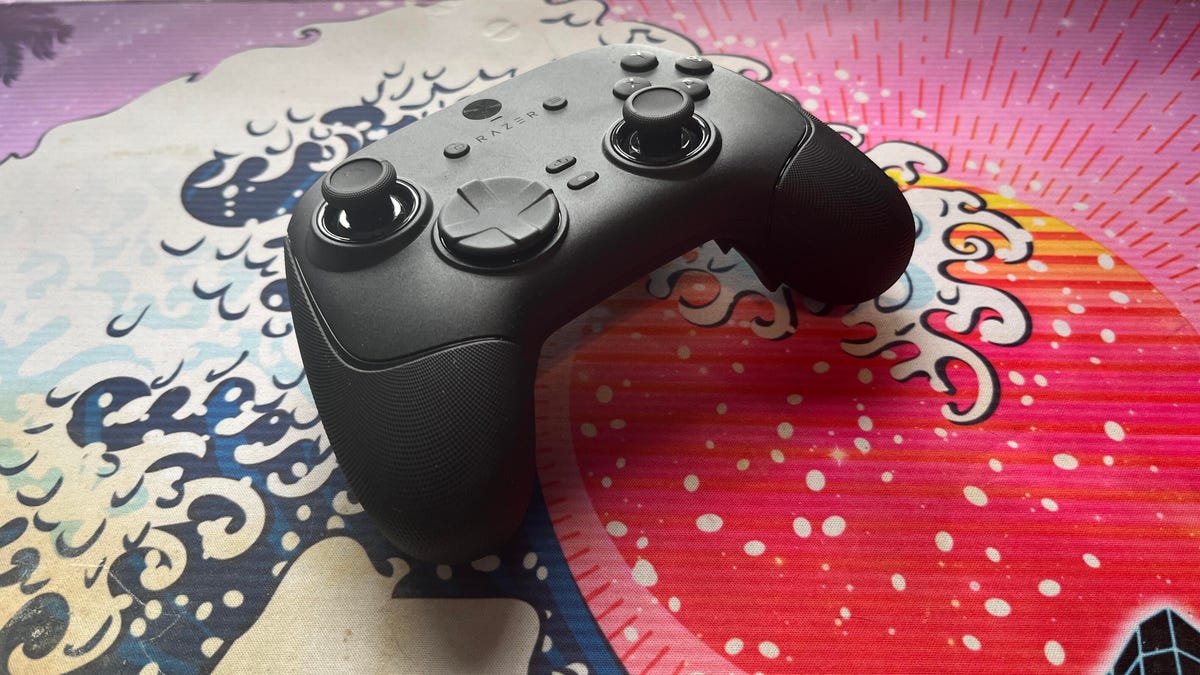
The Razer Wolverine V3 Pro 8K PC controller was not built for me, but admittedly, this has more to do with me as a gamer than the controller itself. I grew up playing the PlayStation 3 and PS4 consoles, cutting my teeth on slim, compact DualSense controllers. Over the past five years, I’ve gamed exclusively on my PC and have grown accustomed to the increased precision of a mouse and keyboard.
The Razer Wolverine V3 Pro 8K PC controller is the antithesis of a DualSense controller. It’s a chunky piece of hardware that might feel natural if you were raised on an Xbox and its bulky controllers, but it took me multiple gaming sessions to get acclimated to the sheer size of the Wolverine V3 and how it fit into my hands, especially since I don’t use a claw grip.
Size aside, this is a PC controller with every bell and whistle you can think of — and its price of $200 reflects that. The 8,000Hz polling rate ensures buttery smooth inputs with no lag, and tunnel magnetoresistance joysticks make every in-game movement feel fluid and calculated. Six extra remappable buttons help you up your game — they’re super handy for hero shooters like Marvel Rivals and hectic games like Battlefield 6. This is a premium product for gamers who are hoarding some serious hardware.
Its price is in line with other premium controllers. One of CNET’s best Xbox controllers is the Wolverine V3 Pro for Xbox, which also costs $200. Similar controllers like the Scuf Instinct Pro and Vitrix Pro BFG are in the same ballpark, pricewise, but the Wolverine V3 Pro 8K PC has a winning combination of competitive variables that make it feel exceptionally easy to use.
This controller is chock full of top-of-the-line technology and feels satisfying to use, but it needs to clear a high bar to feel truly worthwhile as a dedicated PC controller.
Chunky controller, satisfying feedback
When CNET’s Josh Goldman reviewed the Wolverine V3 Pro Xbox wireless controller, he called it «just about perfect.» If it isn’t broken, don’t fix it: Razer replicated many of its successes with the Wolverine V3 Pro PC controller.
The Wolverine V3 Pro 8K PC is the same size as the Wolverine V3 Pro Xbox controller, which is to say it’s a bit chunkier than a standard Xbox wireless controller, but it’s surprisingly much lighter than its Xbox cousin. It weighs just 220 grams, which is appreciably lighter than the Xbox version that weighs 304 grams. And while the Wolverine V3 Pro 8K PC is nowhere near as slim as a DualSense controller, it’s still much lighter than its Sony competitor — a stock DualSense controller weighs 280 grams.
Every button on this controller has a crisp, clean clickiness that scratches the same mental itch that a good mechanical keyboard might. Whether you’re gripping the trigger, pressing a button or squeezing one of the four remappable back paddles, you’ll hear incredibly satisfying auditory feedback that leaves no doubt that the controller is receiving your inputs. At one point, while I sat through a particularly long matchmaking queue, I found myself squeezing the triggers to entertain myself — the snappy pops were enough to keep me off TikTok.
The biggest difference between the V3 Pro Xbox and V3 Pro PC controllers is the variable polling rate — that dictates how often your controller is communicating with the computer. It’s like a refresh rate for your crosshair positioning.
The Wolverine V3 Pro Xbox just can’t compete here: That controller has a wired 1,000Hz polling rate for PC gameplay. The V3 Pro PC controller can be toggled for multiple polling rates, with an 8,000Hz maximum setting. This means the PC controller can report your input data eight times faster than the Xbox controller.
Every movement, turn and button press feels incredibly fluid. It’s safe to say that there’s no input lag with the Wolverine V3 PC controller, but I don’t think it matters too much for moment-to-moment first-person shooter gameplay. If you’re driving a car (or a tank) and you need to stop on a hairpin, you might appreciate Razer’s HyperPolling technology. If you’re not playing a tactical shooter like Counter-Strike or Rainbow Six: Siege, that 8,000Hz polling rate is overkill — if you’re a casual gamer crushing Call of Duty public lobbies with your pals, you’re probably not going to notice it in any of your firefights.
Better than a mouse and keyboard? That’s a little more complicated
I tested out the Wolverine V3 Pro 8K PC controller on Marvel Rivals, ARC Raiders and Battlefield 6 (my current first-person shooter obsession). It’s an extremely solid choice for at least two of these games, and I likely won’t be using my DualSense controller anytime soon.
I had a great time firing magic bolts in Marvel Rivals and rolling tanks through the streets of Cairo in Battlefield 6, but this is a controller that was supposedly designed for high-level shooter gameplay. I’m saddened to report that, when it comes to dominating a first-person shooter match or competing to survive in an extraction shooter, I’d much rather stick to a mouse and keyboard.
In close-range battles, I didn’t feel like the Wolverine controller particularly helped me gain an advantage over my opponents. Mouse-and-keyboard players were often able to lock onto me quicker, even with a high look sensitivity and built-in aim assist. And I felt outmaneuvered and outgunned by mouse-and-keyboard players in the fastest-paced fights. But the controller’s precision TMR thumbsticks made it easy to quickly lock my crosshairs onto enemies and mow them down from afar with light machine guns or sniper rifles in long-range battles.
I also find it useful for games like Battlefield that have a lot of buttons to micromanage during moment-to-moment gameplay. If you want to swap your fire mode from automatic to single-fire, mount your weapon’s bipod against a flat surface or pull out an invaluable class gadget, you’ll be reaching across your keyboard to do so. The six remappable buttons on the Wolverine V3 Pro 8K PC are great for these situations; I loved that I could tap fire my hulking light machine gun by gripping one of the controller’s back paddles.
The controller really shone for vehicle combat, though. I found myself gravitating toward my mouse and keyboard for infantry gunplay, but anytime I’d jump into a tank, I’d reach across my desk and grab the Wolverine again. Having pressure-sensitive triggers helps with any in-game driving: A slight squeeze lets me cautiously move forward, scanning for enemy mines, while fully pulling the trigger down helps me speed out of dangerous situations. Rebinding automatic repair jobs and weapon switches to the back paddles also helped me focus more on in-game combat, which helped me keep my armored vehicles in the fight for longer. With my DualSense controller, I’d have to awkwardly fumble with the D-Pad to activate my vehicle abilities. The Wolverine controller is the definitive way for a Battlefield tank enthusiast to play.
Outside of standard first-person shooter gameplay, I also found the Wolverine V3 PC controller to be handy for hero shooters — with some caveats. When I play Marvel Rivals, I mainly play tanks that require an extensive amount of ability usage but very little aim. Characters like Doctor Strange thrive when you can quickly string inputs together, and rebinding the controls to the Wolverine’s back paddles is great for that.
On the other hand, speedy divers that need to jump in and out of the enemy team’s backline and aim-intensive snipers feel tougher to play with the Wolverine controls, and I’d swap back to my mouse and keyboard whenever I wanted to switch off tank characters and fulfill another role for my team.
One game I don’t recommend the Wolverine V3 Pro PC for is ARC Raiders. While the remappable buttons make it easy to reach for healing items and grenades, losing out on the precision aim of a mouse and keyboard just isn’t worth it in a game where one death can set your progress back by several real-life hours. The controller lets me hold my own against killer ARC robots, but once real players join the mix, I’d rather use my tried-and-true PC hardware setup.
That’s not to say that the Wolverine controller is terrible for a tactical third-person shooter: The back paddles are a great way to quickly access any healing items, grenades and other consumables you’re carrying, which could be the difference between life and death. But when I have teammates depending on me to help them escape with their hard-earned loot, I just don’t trust the Wolverine controller to help me aim better than I can with my trusty mouse and keyboard.
For playing first-person shooters like Call of Duty or Apex Legends at breakneck speeds, the Wolverine V3 Pro 8K PC likely won’t replace your mouse and keyboard. But if your ideal competitive game centers on slower gunplay and long-range firefights, this is the most precise controller I’ve ever laid hands on (and you’ll receive a healthy heaping of help from aim assist to boot).
For the games I like to play, the Wolverine V3 Pro PC controller hasn’t become my primary gaming peripheral. Instead, it’s become a great situational swapout that complements my mouse and keyboard. As much as I like keeping it on deck for a long gaming session, $200 is a high price for a part-time controller.
Technologies
The Most Exciting Video Game Rumors and Leaks Ahead of 2026
Technologies
Today’s NYT Mini Crossword Answers for Wednesday, Dec. 17
Here are the answers for The New York Times Mini Crossword for Dec. 17.

Looking for the most recent Mini Crossword answer? Click here for today’s Mini Crossword hints, as well as our daily answers and hints for The New York Times Wordle, Strands, Connections and Connections: Sports Edition puzzles.
Need some help with today’s Mini Crossword? Read on. And if you could use some hints and guidance for daily solving, check out our Mini Crossword tips.
If you’re looking for today’s Wordle, Connections, Connections: Sports Edition and Strands answers, you can visit CNET’s NYT puzzle hints page.
Read more: Tips and Tricks for Solving The New York Times Mini Crossword
Let’s get to those Mini Crossword clues and answers.
Mini across clues and answers
1A clue: Nod (off)
Answer: DOZE
5A clue: Naval submarine in W.W. II
Answer: UBOAT
7A clue: Tricky thing to do on a busy highway
Answer: MERGE
8A clue: Heat-resistant glassware for cooking
Answer: PYREX
9A clue: Put into groups
Answer: SORT
Mini down clues and answers
1D clue: Break up with
Answer: DUMP
2D clue: Falls in line, so to speak
Answer: OBEYS
3D clue: Legendary vigilante who cuts a «Z» with his sword
Answer: ZORRO
4D clue: Rarin’ to go
Answer: EAGER
6D clue: Common reminder for an upcoming appointment
Answer: TEXT
Don’t miss any of our unbiased tech content and lab-based reviews. Add CNET as a preferred Google source.
-

 Technologies3 года ago
Technologies3 года agoTech Companies Need to Be Held Accountable for Security, Experts Say
-

 Technologies3 года ago
Technologies3 года agoBest Handheld Game Console in 2023
-

 Technologies3 года ago
Technologies3 года agoTighten Up Your VR Game With the Best Head Straps for Quest 2
-

 Technologies4 года ago
Technologies4 года agoBlack Friday 2021: The best deals on TVs, headphones, kitchenware, and more
-

 Technologies4 года ago
Technologies4 года agoVerum, Wickr and Threema: next generation secured messengers
-

 Technologies4 года ago
Technologies4 года agoGoogle to require vaccinations as Silicon Valley rethinks return-to-office policies
-

 Technologies4 года ago
Technologies4 года agoOlivia Harlan Dekker for Verum Messenger
-

 Technologies4 года ago
Technologies4 года agoiPhone 13 event: How to watch Apple’s big announcement tomorrow

